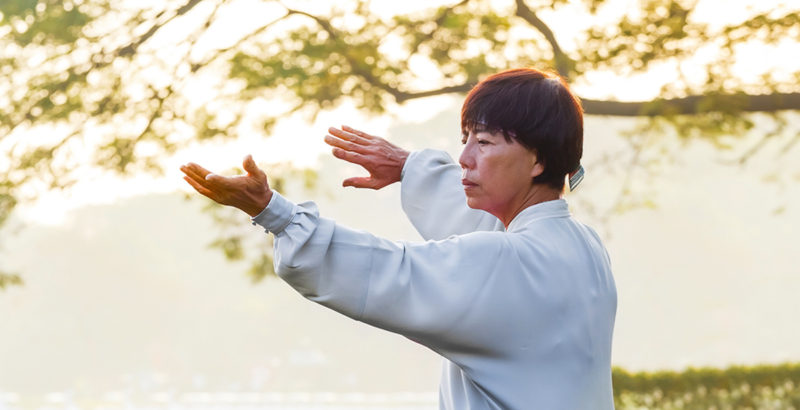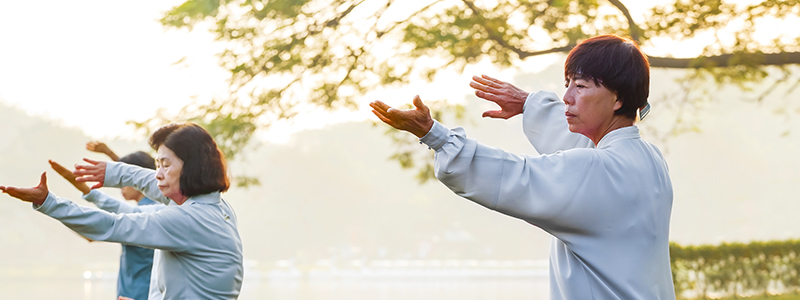Taijiquan (太極拳) practitioners likely know the importance of paying attention to what they are practicing, but they may not realize that it is natural and normal for humans to attenuate or “tune out” various signals that we receive. Since we are only capable of processing a quite limited amount of information at one time, we necessarily suppress the information that seems to be less important.
When the ability to suppress undesired sensory information (sensory regulation) is faulty, as in some autistic individuals, it is difficult to function since one is unable to sort out the meaningful information from the background noise and one can become overwhelmed by the multiple sensory inputs. So we need the ability to suppress information that we actually are receiving so that it does not distract or overwhelm us. It is not so much a matter of paying attention as it is a matter of what to pay attention to.
Although we are not aware of much of the information that we are receiving, this additional information can be listened to if we pay attention to it. This can be observed in individuals who have gone blind and who subsequently compensate by developing their awareness of signals from other senses like hearing, smelling, feeling air currents on the hairs of their skin, or heat on their skin, etc. This is information that most people receive, it is just that we have attenuated those signals when sight is our predominant sense organ.
Taijiquan teaches us to pay more attention to such senses as proprioception (awareness of the position and movement of the body) that would normally have less attention devoted to it. Heightened proprioception will give trained individuals more information from contact with other people than would be possible without training to heighten awareness of these information signals, and this is an important factor in Taijiquan as a martial art (as well as for balance in aging or ill individuals).
One could say that Taijiquan is learning to be aware of what one should be aware of. But this is difficult because our minds can really only focus attention to one or two things at a time, and most of our senses are constantly being suppressed. Until we become familiar enough with one aspect that it no longer requires our direct attention, we have difficulty paying attention to other things at the same time. We need to drill various things that require our attention long enough that we can do it correctly while no longer needing to devote much attention to it. Then we can rub our belly and pat our head simultaneously.
We have practiced constantly adjusting our bodies to remain balanced and upright so long that most of us no longer realize that we are actively doing it. But the awareness of the difficulty of balancing returns with frailty due to aging. It can also be demonstrated in healthy young individuals by having them balance on one leg with their eyes closed. Almost everyone trying to balance on one leg with their eyes closed will realize the effort, and the attention needed to do so, even though it seems automatic during normal daily activities.
Fortunately, we are typically quite good at recognizing when we are losing our balance. Because of this, practices like pushing hands (推手 tui shou) can be used to examine the moment when we go off balance and train to make corrections. If we know when we go off balance, then we can direct our attention to the conditions present at that moment. We need awareness of problems before we can hope to make adjustments that correct the defects that lead to our being off balanced.
Another effect of our limited ability to process multiple stimuli simultaneously is the so called “monkey mind” (心猿 xinyuan) where our attention jumps around from one thing to another and never really pays much attention to any of them. We go from having our attention captured by one thing only to notice something else and shift our attention there, and on and on, never really being able to settle into a state where we can see the big picture rather than restlessly chasing after numerous individual stimuli.
A common example of our mental limitations is when we are corrected on one movement in our form sequence we often then mess up the movement preceding the one being worked on. Our mind jumps ahead to the corrected move and the attention is directed to the correction one is anticipating making, with the result that the attention wanders from its preceding movement. When the mind focuses ahead, it is difficult to pay attention to the present. We tend to focus on the past (the mistake we made that needed correcting), as well as the future (how should the next movement be done to correct the past mistake), and often miss having our attention on the present.
Because of the “monkey mind” and other mental limitations, martial artists can often benefit from meditation and other mind calming and training practices. In Taijiquan, the cultivation of a calm mind through slow form practice serves as a “meditation in motion.” The slowness also allows practitioners enough time to mentally process the many components that are involved in the art, without having to jump ahead to the next movement before finishing the current one; therefore allowing one to keep the mind in the present moment throughout the form.


Leave a Reply